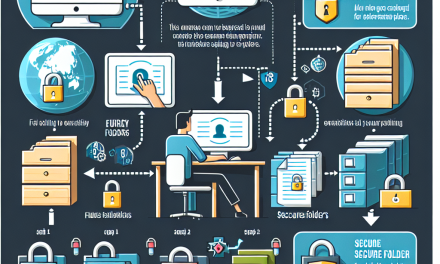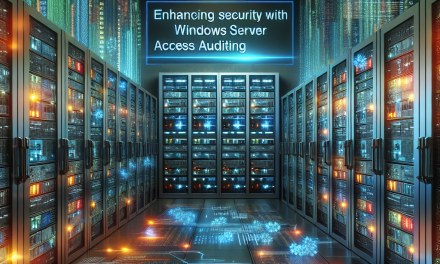As organizations increasingly rely on load balancers to ensure high availability and reliability of their applications, securing these components becomes paramount. Windows Server Load Balancers (WSLBs) play a crucial role in distributing traffic efficiently. This article explores the best practices for securing WSLBs to protect against potential threats and vulnerabilities.
1. Keep Your Windows Server Updated
Regularly update your Windows Server to ensure you have the latest security patches and features. Microsoft frequently releases updates and security fixes that can help protect your server from known vulnerabilities.
Steps:
- Enable automatic updates or schedule regular manual checks.
- Test updates in a staging environment before applying them to production.
2. Use a Firewall
Implement a robust firewall configuration to monitor and control incoming and outgoing network traffic. Windows Firewall is built-in and can be effectively used to restrict access to load balancer ports.
Tips:
- Block all unnecessary ports. Only allow ports required for your applications and administrative services (e.g., HTTP, HTTPS, RDP).
- Create specific rules for different server roles and services.
3. Implement Network Security Groups (NSGs)
If using Azure or similar cloud services, utilize Network Security Groups to filter traffic to and from your load balancer. These allow you to apply rules that govern the accessibility of resources.
Best Practices:
- Create inbound and outbound rules based on the principle of least privilege.
- Regularly review and update NSG rules as your architecture evolves.
4. Employ SSL Encryption
Secure your load balancer with SSL certificates to encrypt data in transit. This prevents unauthorized access and protects sensitive information from being intercepted.
Steps:
- Obtain and install an SSL/TLS certificate from a trusted Certificate Authority (CA).
- Configure the load balancer to manage SSL termination if necessary, thereby offloading encryption/decryption tasks from your backend servers.
5. Monitor and Log Activity
Regularly monitoring your load balancer can help identify and mitigate security threats before they escalate. Logging network traffic and server activity is essential for security audits.
Recommendations:
- Use Windows Event Logs to capture relevant information.
- Implement centralized logging solutions for comprehensive visibility.
6. Implement Access Controls and Authentication
Limit administrative access to your load balancer to only those who need it. Implement strong authentication methods and enforce role-based access control (RBAC).
Practices:
- Utilize Active Directory to manage user permissions.
- Employ multi-factor authentication (MFA) for added security.
7. Conduct Regular Vulnerability Assessments
Regular vulnerability assessments help to identify and mitigate potential security weaknesses in your load balancer and the associated infrastructure.
Steps to Implement:
- Use tools like Microsoft Baseline Security Analyzer (MBSA) or third-party solutions to scan for vulnerabilities.
- Schedule assessments quarterly or more frequently based on your organization’s risk profile.
8. Back Up Your Configuration
Always maintain a backup of your load balancer’s configuration settings. In the event of a security incident or system failure, having a backup can expedite recovery.
Best Practices:
- Automate configuration backups and store them in a secure location.
- Regularly verify the integrity and availability of backup data.
9. Educate Your Team
Regular training and education of your IT staff regarding security best practices and emerging threats is vital. Awareness can significantly reduce human error and boost your organization’s security posture.
Initiatives:
- Conduct quarterly security training sessions.
- Share updates about recent security trends and incidents within the organization.
10. Integrate Application Security Best Practices
Finally, securing the applications behind your load balancer is just as important as securing the load balancer itself. Follow application security best practices including secure coding, regular updates, and performing security audits of application code.
Recommendations:
- Use application firewalls to protect against SQL injection, cross-site scripting (XSS), and other common attacks.
- Regularly review application logs for signs of unauthorized access or anomalies.
Conclusion
Securing Windows Server Load Balancers requires a comprehensive and proactive approach. By regularly updating your systems, implementing strong access controls, and ensuring robust monitoring, you can significantly mitigate risks. Following these best practices can help ensure that your load balancers serve their purpose effectively while safeguarding your organization’s data and resources.
By prioritizing security in your load balancing strategy, you help create a more resilient infrastructure that can withstand evolving cyber threats.
We welcome your thoughts and experiences with implementing these best practices. Share your comments below to engage with the WafaTech community!





